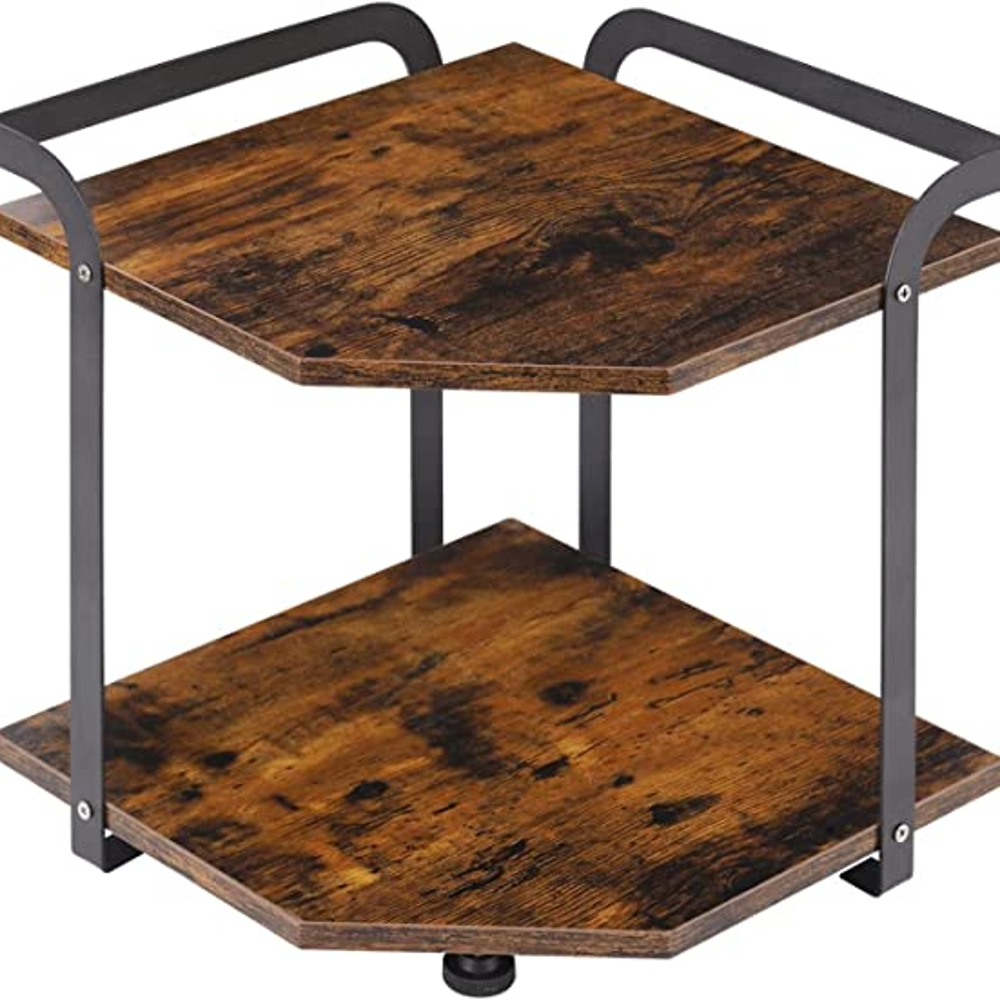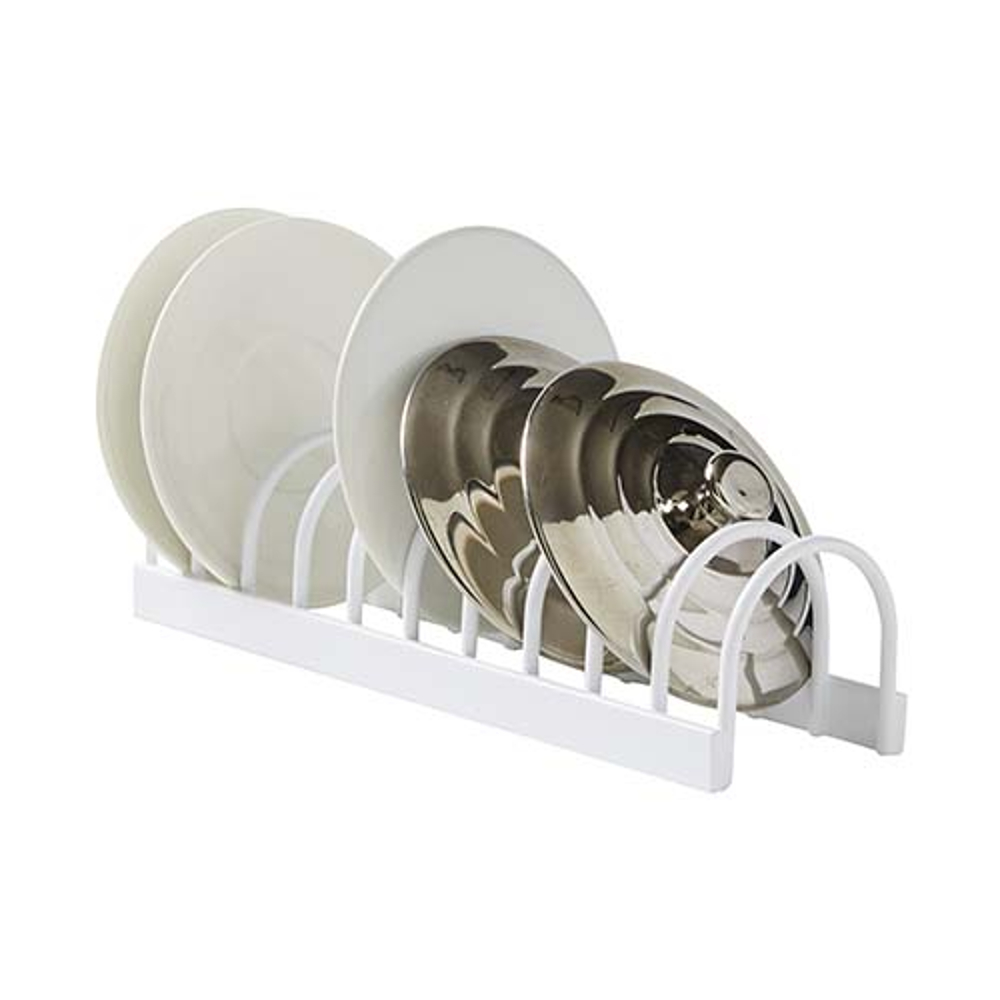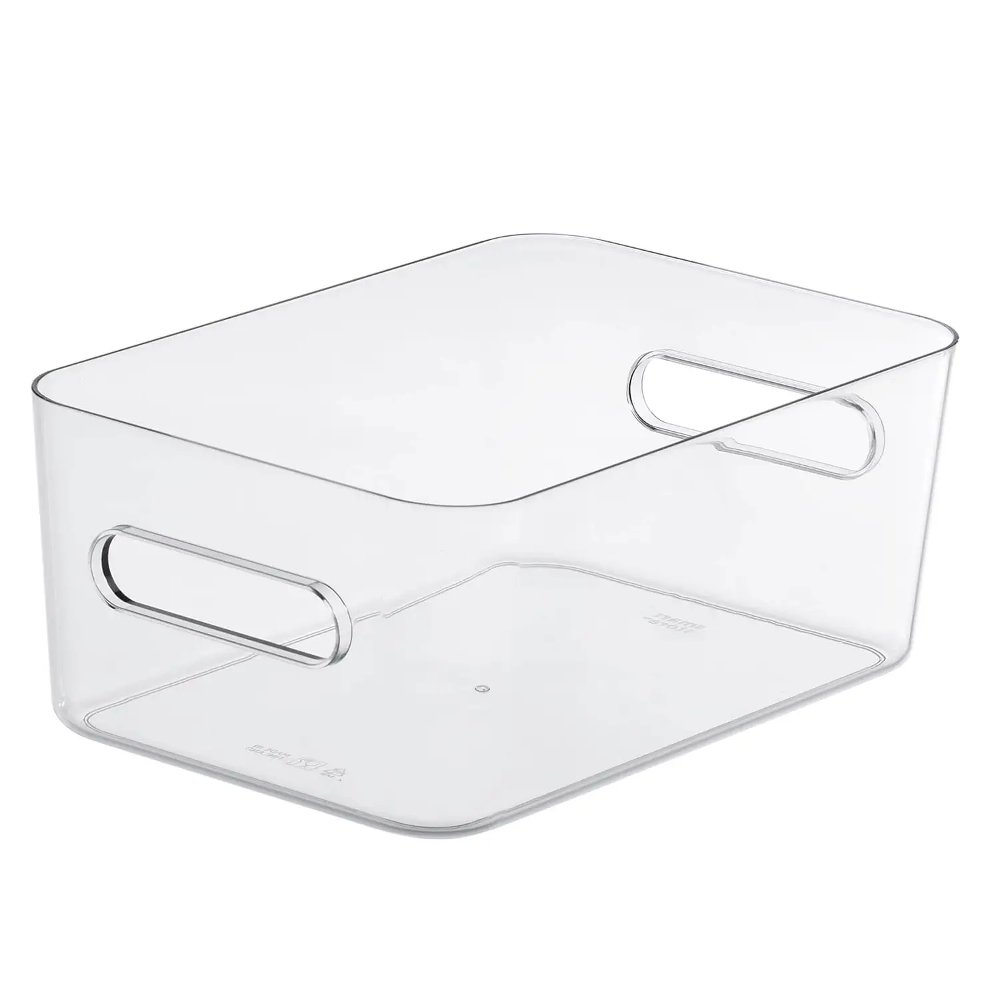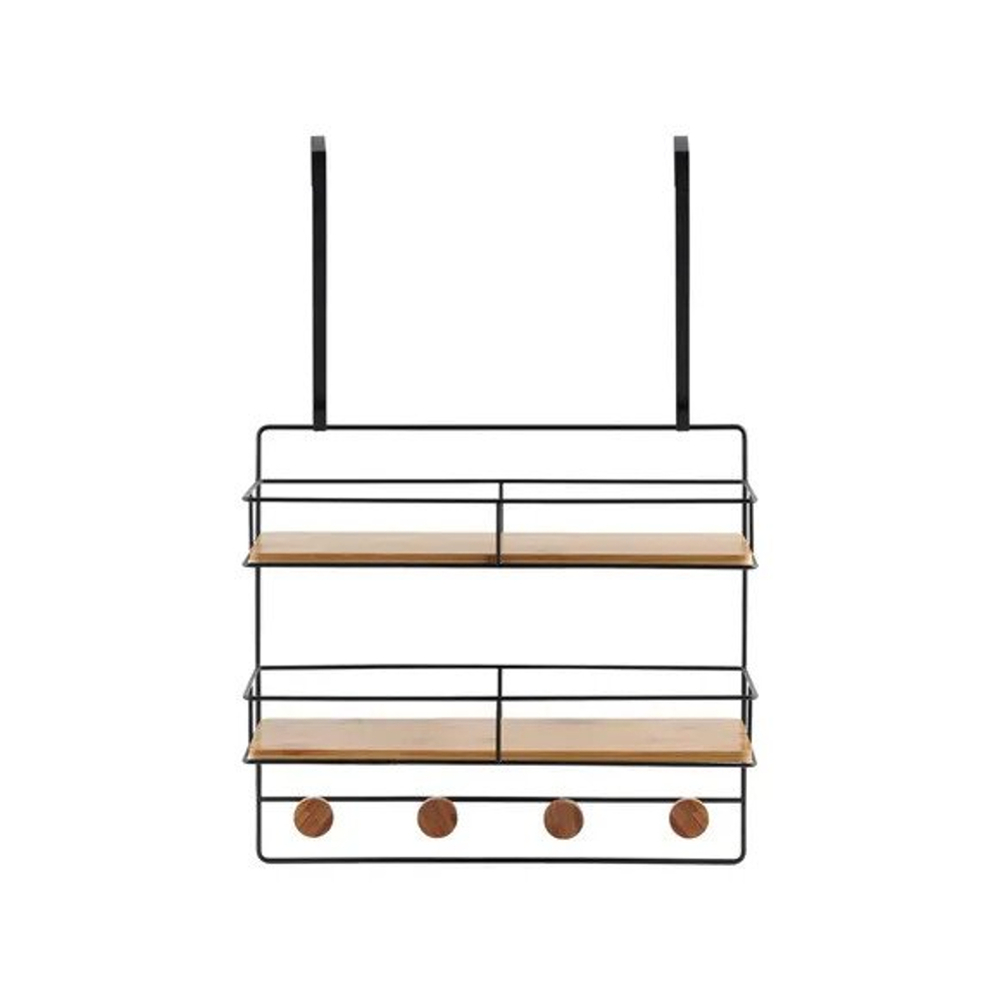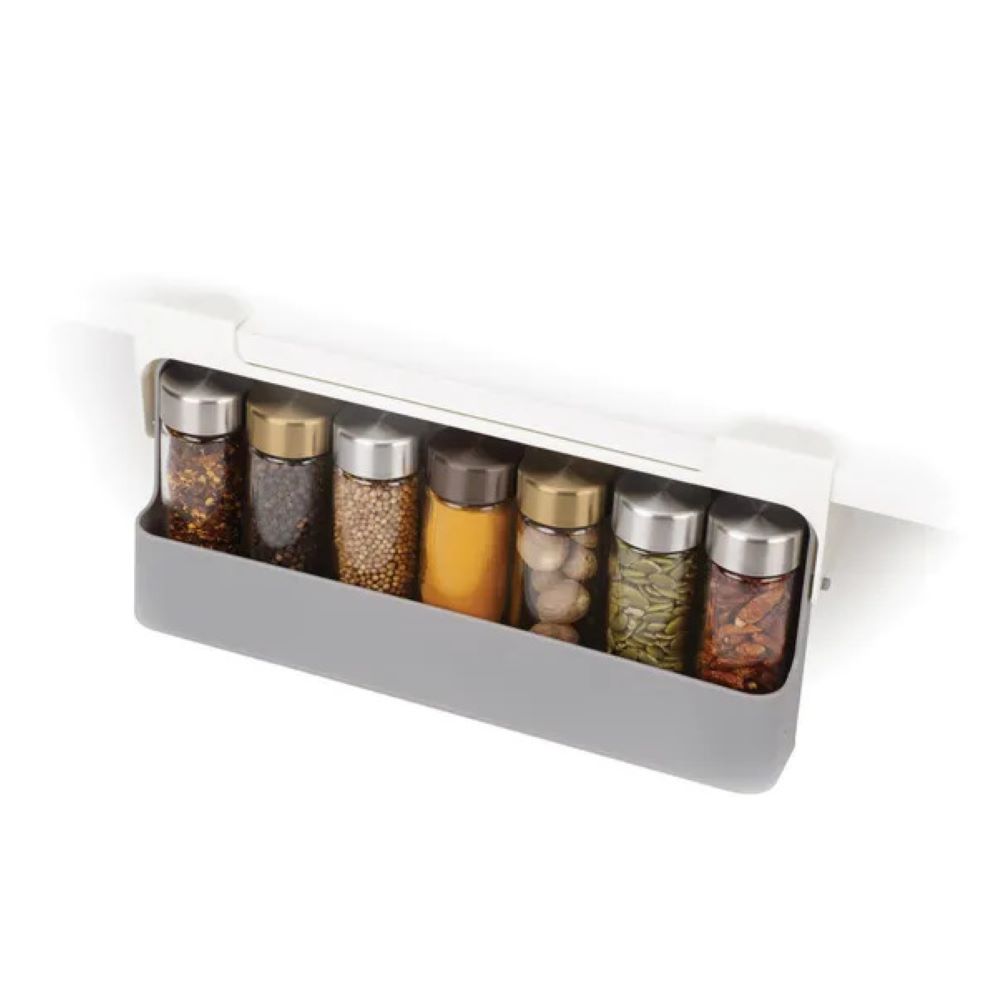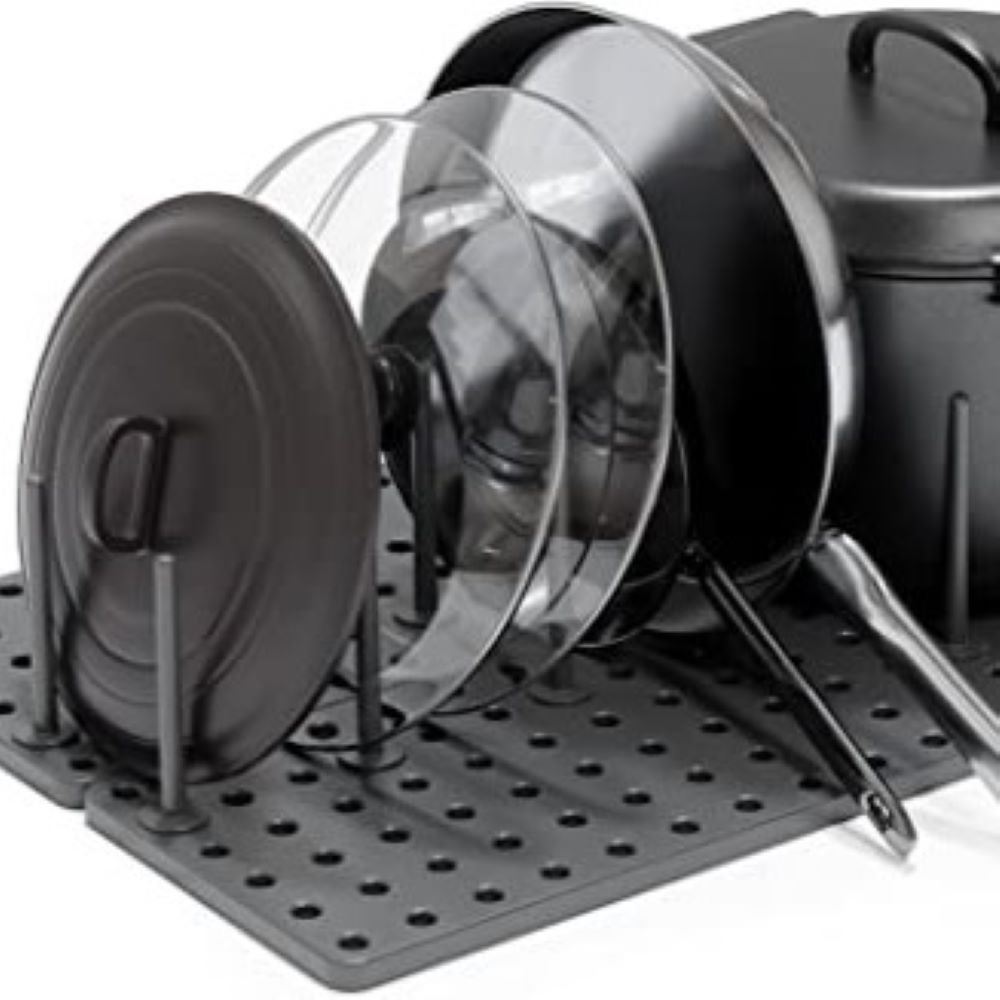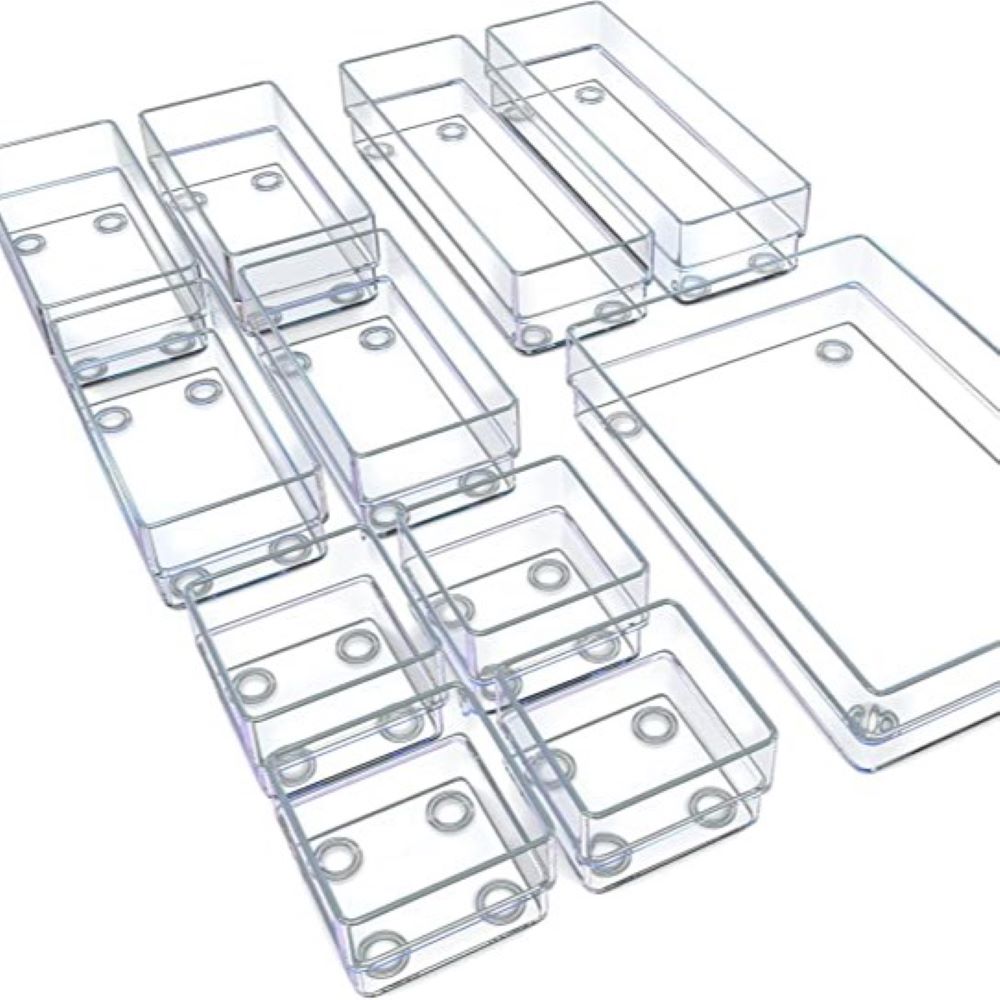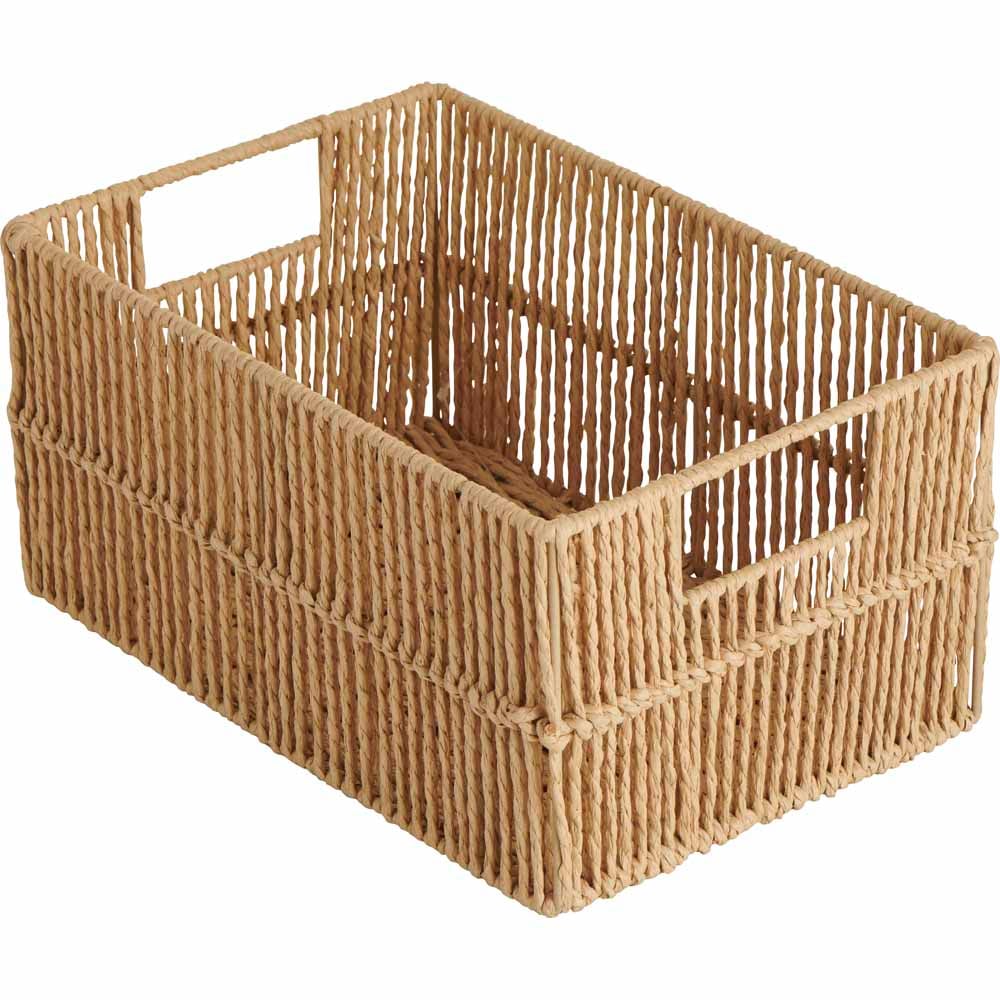How to organise kitchen cupboards – 23 expert tricks to keep kitchen cabinets tidy
Space-savvy solutions and expert tricks that will get your kitchen cabinets in order
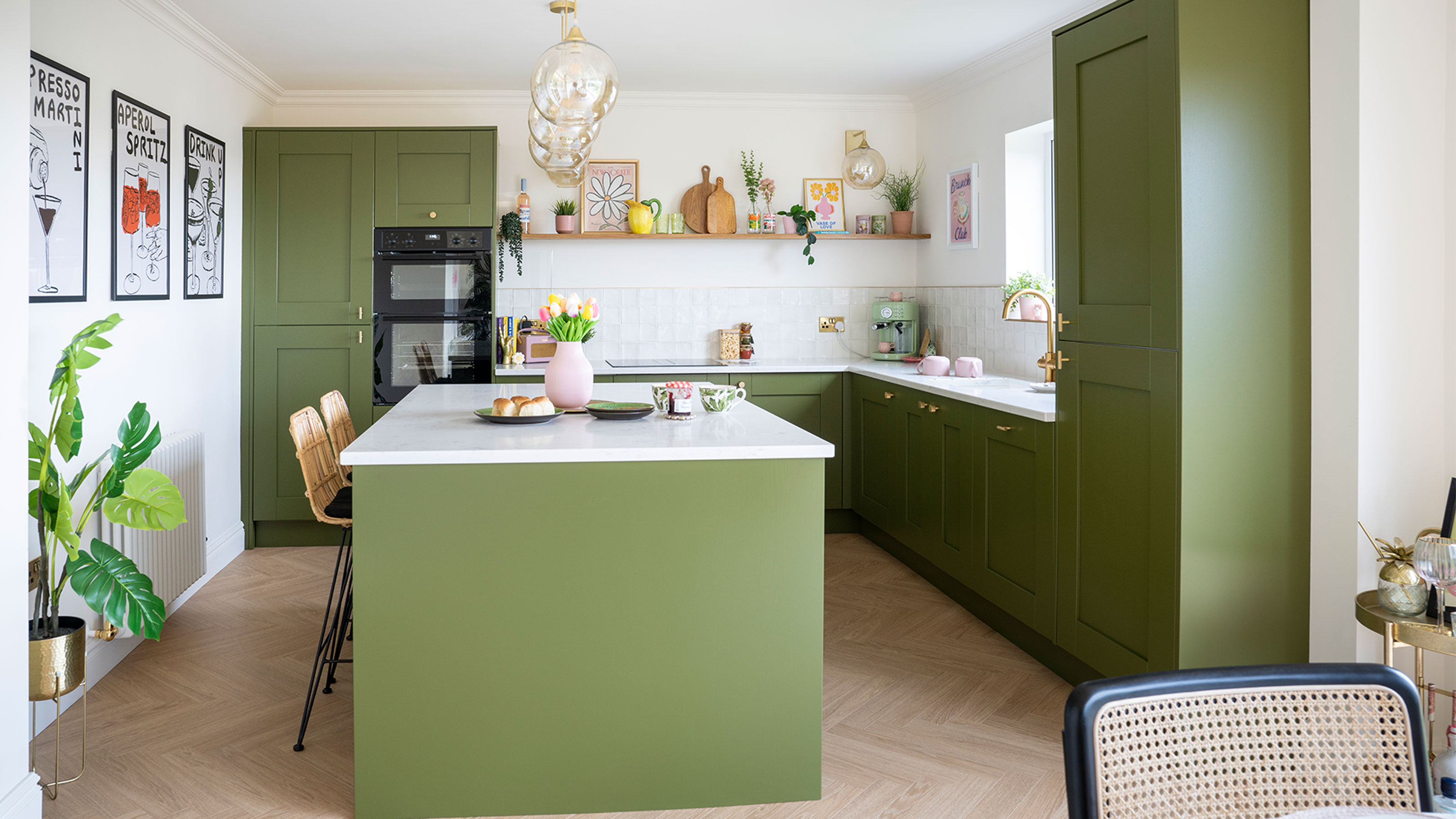

Kitchen cabinets are the most important storage in the home, but used daily and storing so much they can quickly fall into chaos. But knowing how to organise kitchen cupboards is a game-changer, and will make the world of difference to how your kitchen runs.
There are plenty of kitchen storage ideas to help you organise the never-ending list of supplies for your kitchen, but which of these works best behind cupboard doors? We rely on our kitchen cupboards to store just about everything we will ever need for cooking, eating, cleaning, and maybe even working, which is why it's so important to take the time to learn how to organise kitchen cabinets.
'With spring finally here, there’s no better time than now to refresh your home and one area that frequently gets overlooked is the kitchen,' says Vlatka Lake, Etorage Expert, Space Station. 'If you feel like your kitchen cupboards are constantly feeling cluttered, then it may be time to re-organise and declutter.'
So just like learning how to organise kitchen utensils, knowing how to organise kitchen cupboards will help you create a system that works for you and your kitchen. With the help of professional organisers and declutters, including the much-loved ITV This Morning favourites the Style Sisters, we've come up with 24 ideas to help you get your kitchen cabinets in order.
1. It starts with a good declutter
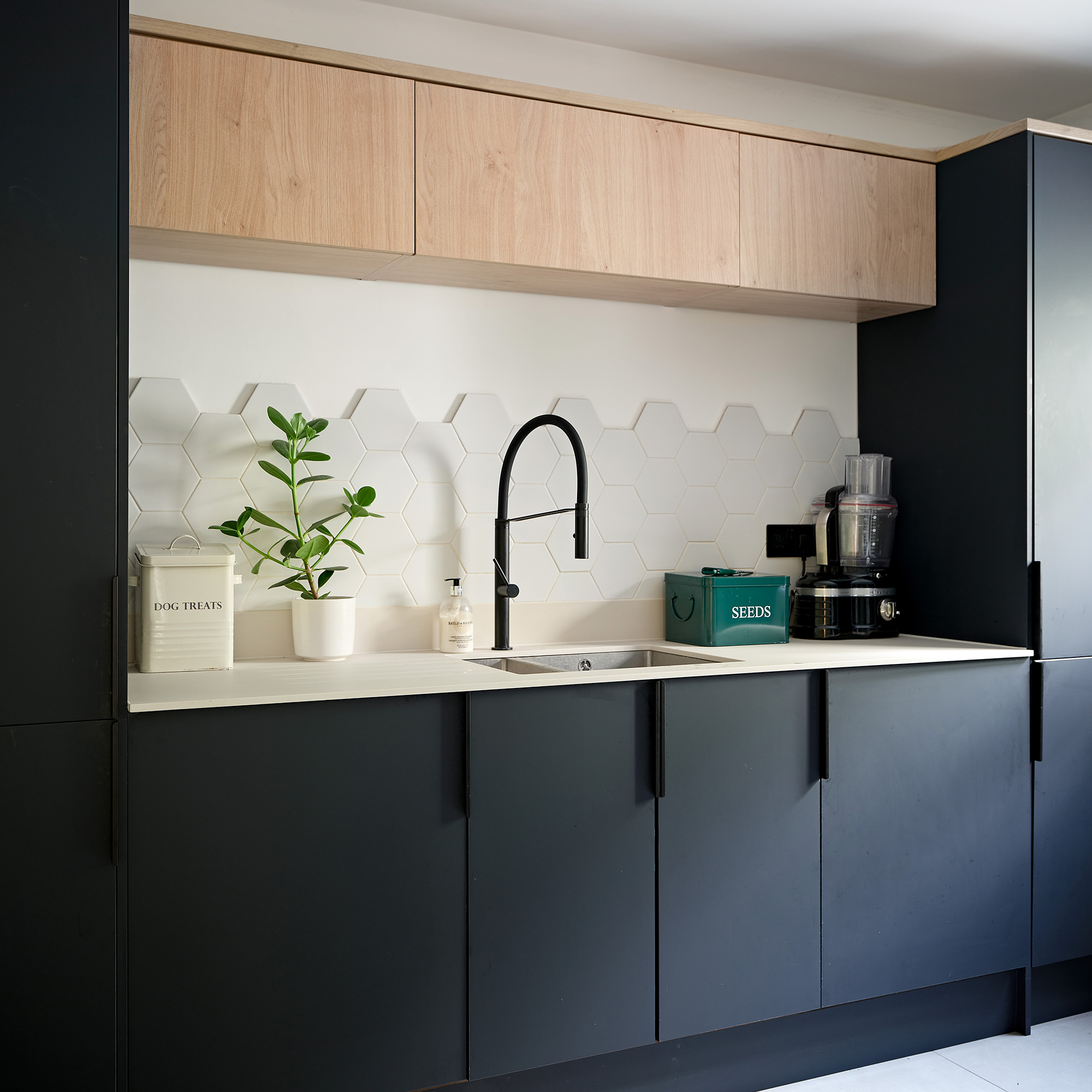
You probably guessed that the first step to learning how to organise kitchen cupboards is to declutter them. Incorporating expired food and unusable crockery into a new system of organisation defeats the objective, so start by going through your cupboards - all the way to the back - and getting rid of anything you don't need.
‘Go through drawers and cupboards to see what you have, what you actually use and how many repeats you have,' says Vicky Silverthorn, professional organiser, You Need A Vicky. ‘You’ll be surprised after a good declutter at just how well your kitchen stores things without much help.’
2. Change the location of unused items

If after decluttering your kitchen cabinets they still feel like they're bursting at the seams, have a look at the items that don't actually need to be in the kitchen. Do you have heaps of canned goods that could be kept elsewhere until you get round to using them? Or perhaps you've hoarded a stash of cleaning products that you won't need to open for a while?
Sign up to our newsletter for style inspiration, real homes, project and garden advice and shopping know-how
'If you are guilty of purchasing multiple products and bulk buying, think about whether there's anywhere else in the home you could store these to free up cupboard space, such as a shelf in the garage or a utility room,' say the Style Sisters.

Charlotte Reddington-Smith and Gemma Lilly make up the internet sensation that is Style Sisters. Charlotte is an interior designer and Gemma a fashion stylist who collaboratively came together to bring you a detoxing and decluttering service for the home. Organising everything from playrooms to kitchen cupboards and dressing rooms, the pair have a number of celebrity clients - including Rita Ora, Vicky Pattison, Amanda Holden, Georgia Toffolo, Rochelle Humes, Lisa Snowdon, Frankie Bridge & Vogue Williams. Charlotte and Gemma are regulars on This Morning and they appeared at London's Ideal Home Show 2023.
3. Organise hard-to-reach corner cabinets
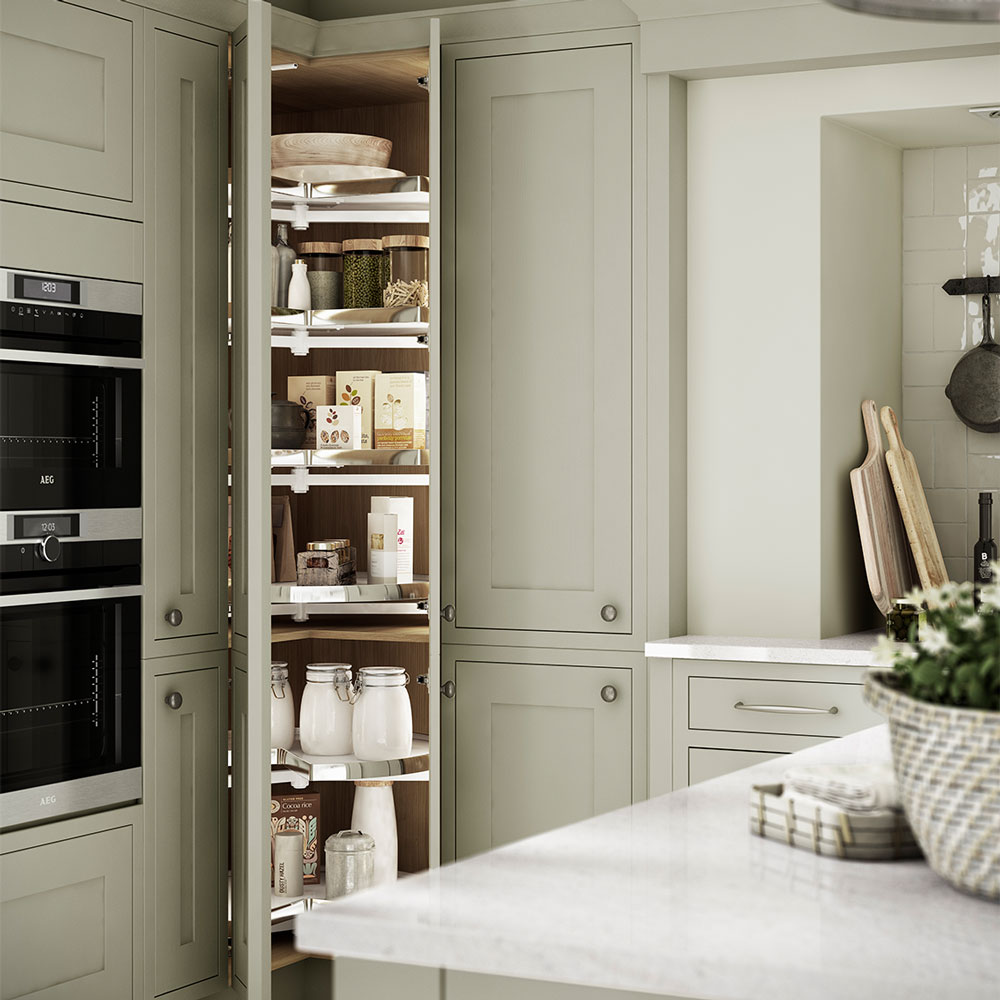
'If you have corner cupboards, things can easily get forgotten about at the back, so only store rarely used items there or invest in some pull-out storage to make it more accessible,' suggests Amanda Biggs, APDO’s membership director and founder of Professionally Organised.
Knowing how to organise kitchen cupboards is a little more tricky when it comes to corner cabinets, as they're notoriously difficult to access and blind corners make it awkward to see or reach what’s inside. A three-quarter carousel unit is a great way of tackling the problem in a tight corner spot. Half-width doors fold out, with swivel interior shelves that make it easy to grab what’s inside. A perfect solution for a full-height larder unit.
4. Downsize with slimline larder storage

While a traditional full-sized larder or pantry is the dream, if your kitchen is on the small side, it might not be possible, but there are alternative kitchen pantry ideas that might work instead. Compromise with a slimline version that can be squeezed into a 40cm cm deep cupboard.
‘Try an innovative larder system that moves the contents of the cupboard out to you,’ says Graeme Smith, Second Nature Kitchens. ‘It’ll make the contents easier to see and access so packets and cartons don’t get left at the back of cupboards.’
5. Store non-essentials lower down
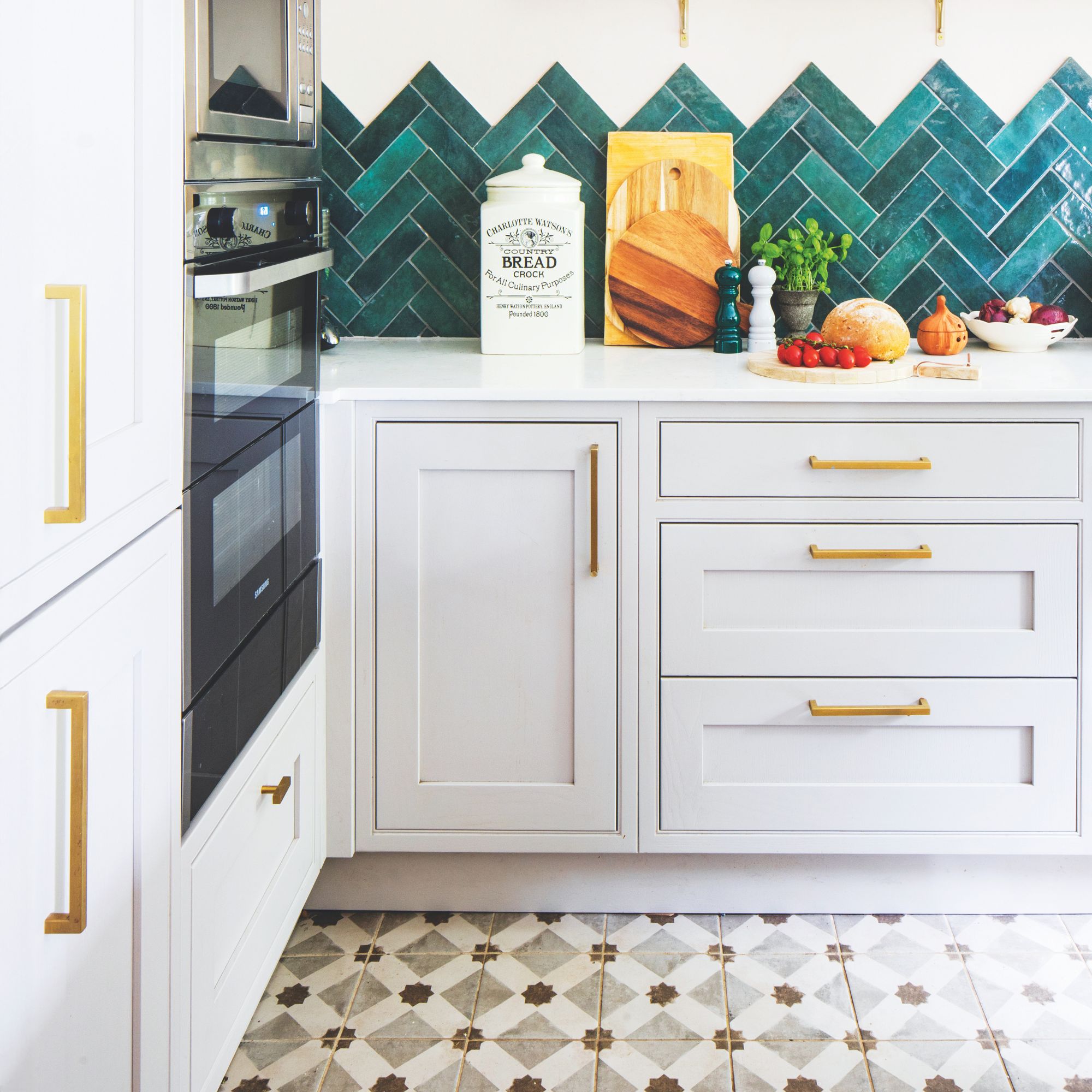
'Thinking about the items you use on a daily basis which you need easy access to will really help to kick start the organising process,' the Style Sisters say.
Larger appliances that are used every day are fine living out on work surfaces, but for those used less frequently or for bulky items that eat up space, try storing them out of the way in lower-down cupboards so they can be pulled out when needed.
A rotating half-sized carousel will give easy access to hard-to-reach corners in base cabinets which are ideal for storing saucepans and bakeware.
6. Set up a tea and coffee station

'Keep things as simple for yourself as possible, such as storing mugs and anything hot drink related in the cupboard closes to the kettle,' say the Style Sisters. 'You want your home to work for you and organising a space with a little bit of logic will go a long way.'
Devote one cabinet to a drinks station with tea and coffee-making essentials stored close to the kettle or coffee machine so everything can be accessed easily. Include mugs, cups, tea spoons and extras like flavoured syrups and milk frother. Transfer your tea bags and coffee into jars, like these White Hang Tag Canisters, £6 at Dunelm, to keep your hot drinks station neat and tidy.
7. Use slot-in racks to organise cookware

'The less room taken up by bulky items in your cupboards, the better,' says Joe Authbert, Buying Manager, ProCook. 'Look for smarter ways you can stack items such as pots and pans and bowls or mugs that nest within one another.'
Flat items like baking trays, lids and chopping boards often get shoved in a drawer or cupboard, but un-stacking them every time you want to use something is a pain. Organiser racks - similar to a toast rack - let you slot items in individually for easier access.
8. Hang cleaning supplies on a rail
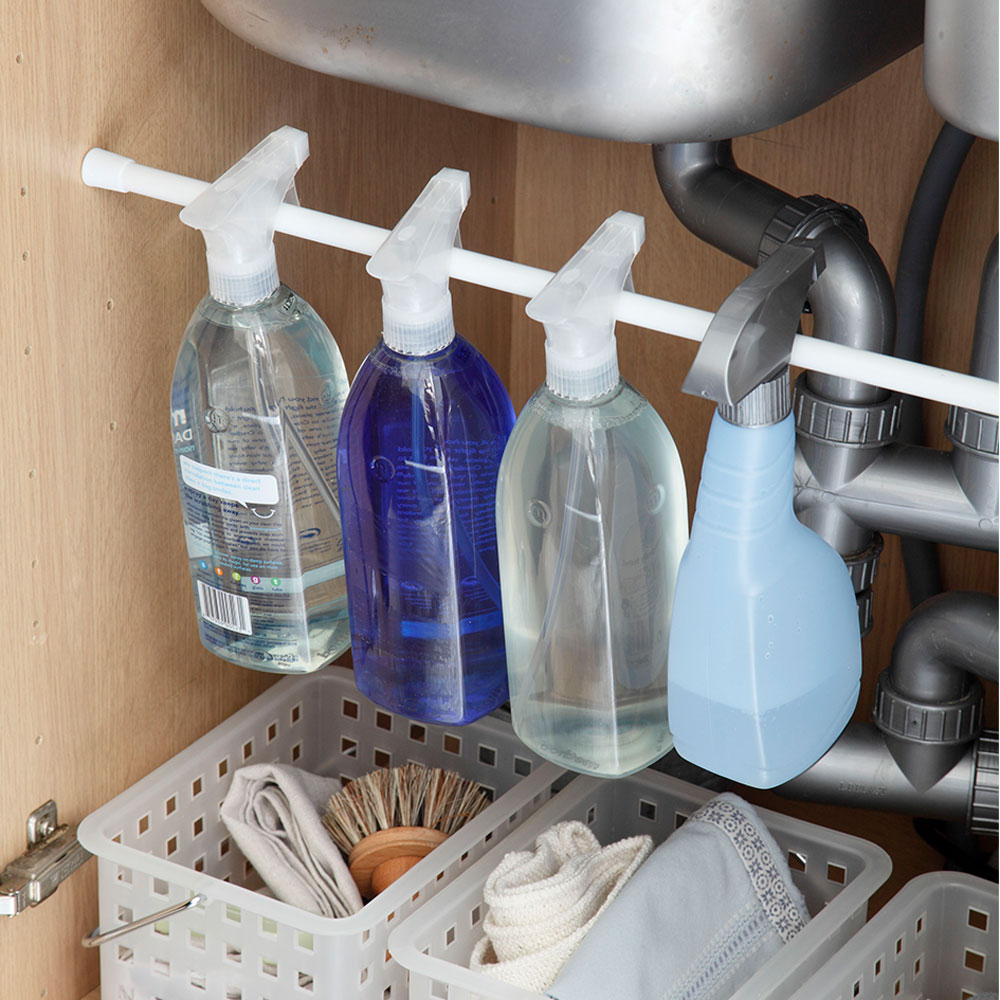
This neat trick is inexpensive and perfect for organising under sink ideas. Use a length of curtain tension rod, available from Amazon from £7 - the spring-action kind - fixed in place just below the sink. Then simply hook cleaning spray bottles up out of the way and tidy the rest of the cupboard’s contents into neat plastic baskets at the bottom.
This will make your cleaning essentials easier to grab and go, plus you'll also be impressed at how organised your under-sink cabinet looks whenever you open it.
9. Utilise wasted cupboard space
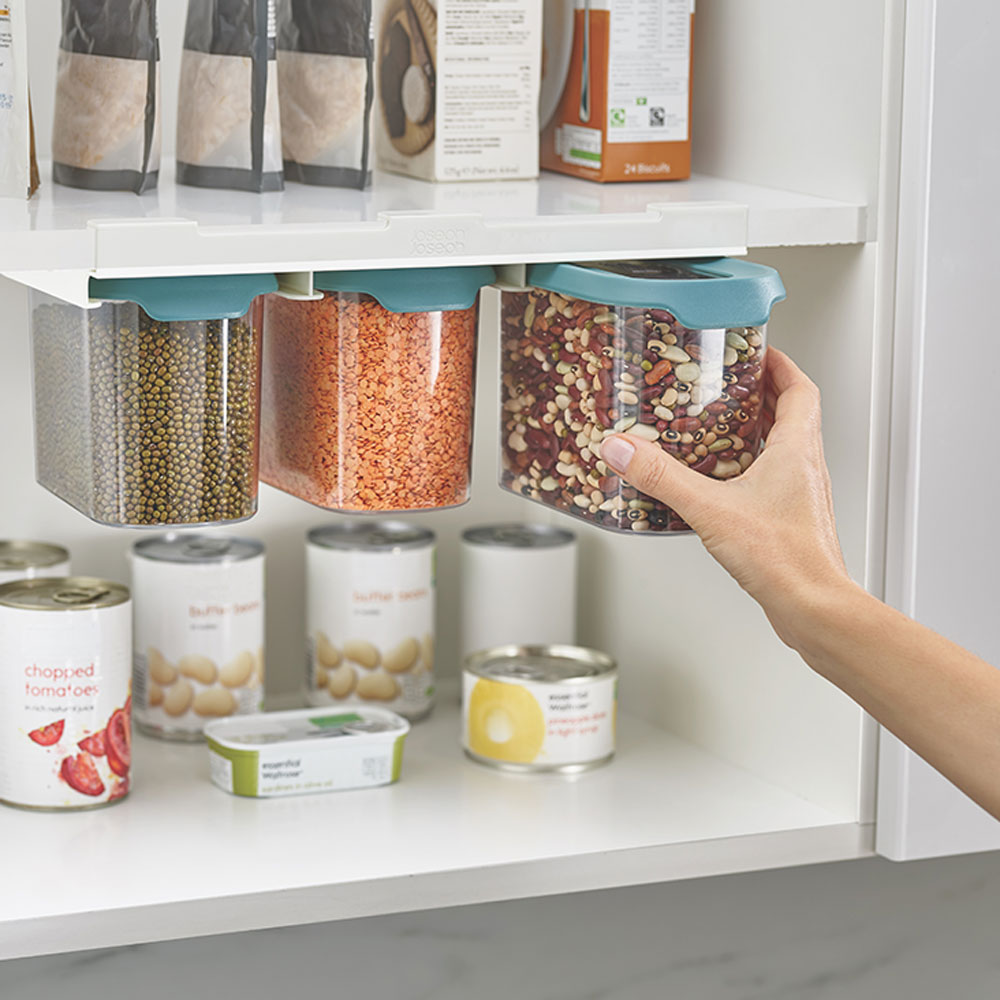
'If you’re limited on storage space, take your biggest cupboard and use shelf risers and under-shelf hanging storage to maximise space – fill the cupboard completely rather than wasting valuable cupboard real estate', says Dilly Carter.
Slide-out containers, like these Under Shelf Wire Storage Baskets, £7.50 at M&S, are another option for utilising wasted space between shelves. You can mount these on rails underneath a shelf (or under a cupboard), and opt for air-tight containers with easy-open lids if you prefer. These are ideal for storing dry ingredients like rice, pulses or pasta. They look much neater than storing these foods in their original packaging, and make it easier to know what exactly is in your cupboard.
10. Double up on shelf space
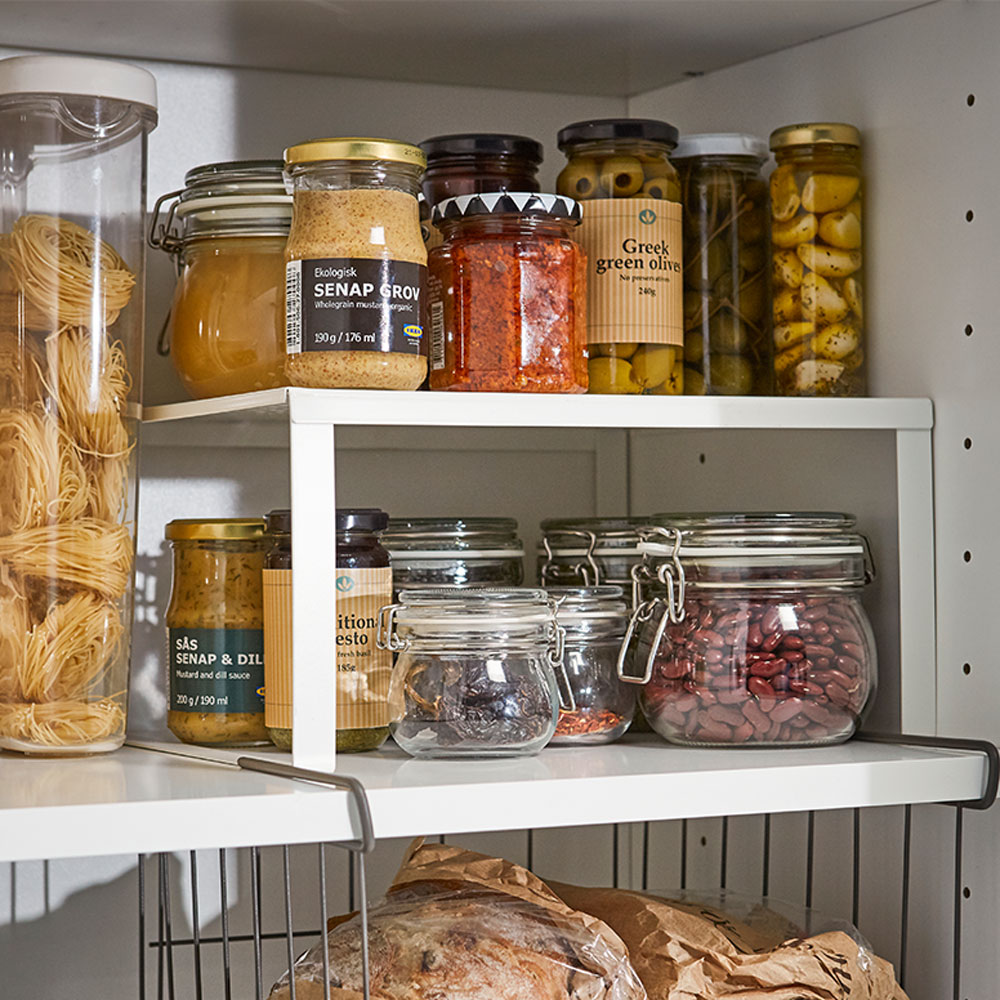
Kitchen wall cabinets with fixed shelves often have large gaps inbetween that get wasted, particularly above shorter items. Double-up on shelf space with these clever raised inserts, like the Caddy Stack Organiser Shelf, £14.99 at Lakeland, to give another layer of storage on top for jars and packets.
'Shelf risers are great if you have a lot of canned goods or other items that need to be stored on shelves like herbs and spices,' says Shanade McAllister-Fisher, Interior Designer. 'They help to maximise vertical space in your cupboards and make it easier to see what you have - meaning no more out-of-date spice mixes hidden in the back of the cupboard.'
Great for food storage, these raised inserts also come in handy for storing crockery and glassware, rather than having too-tall stacks of bowls and plates that might topple.
11. Switch to transparent storage
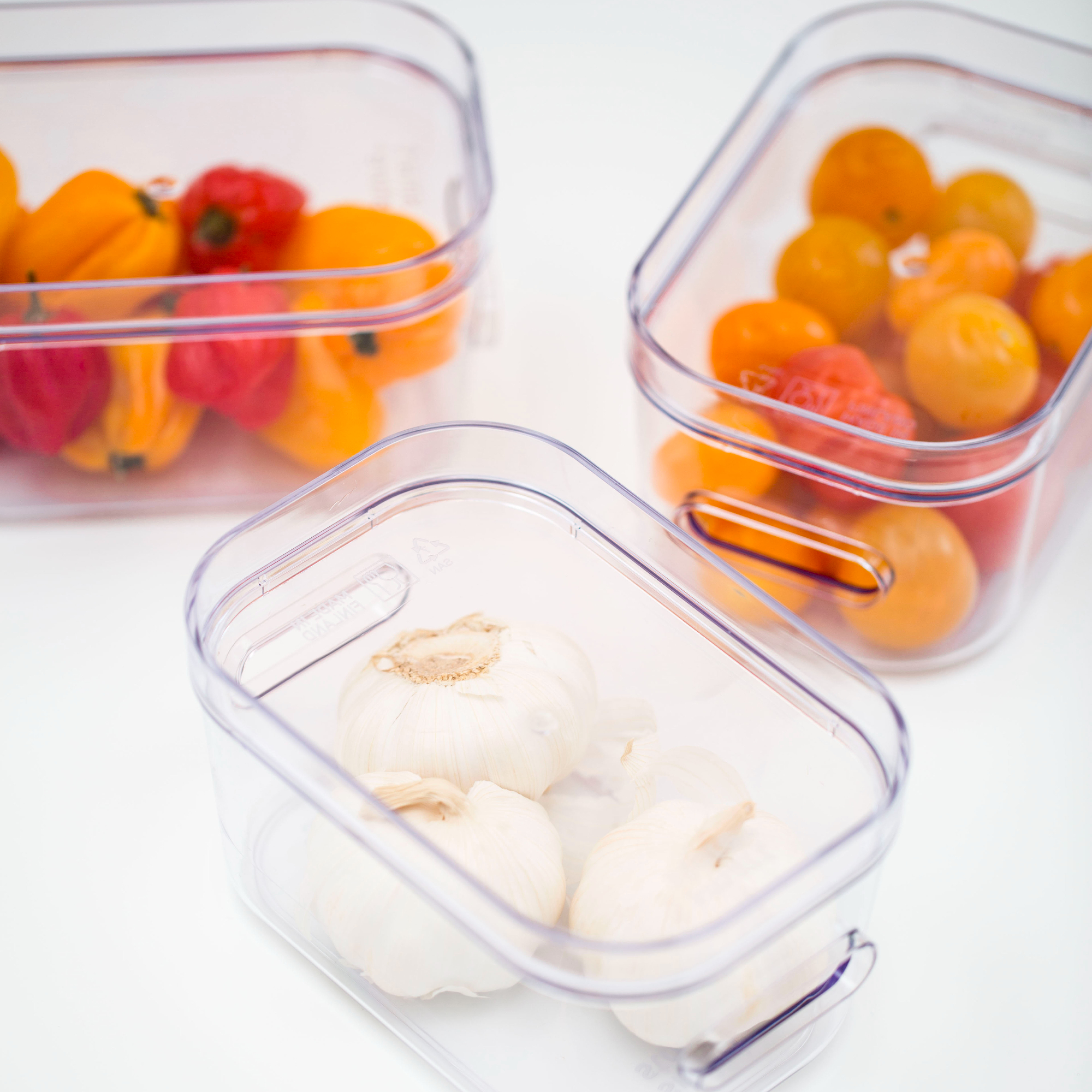
'Acrylic containers and glass storage jars with a labelling system will level up the organisation stakes, plus help you and the rest of the household to stick to the system!' say Charlotte and Gemma of the Style Sisters.
The beauty of transparent storage is that you can see what's inside your containers at a glance. Having see-through storage also means the inside of your kitchen cabinets or fridge looks more cohesive and organised, which is harder to achieve with different branded food packets.
'Transparent stackable storage which can fit in a drawer or on shelves work well for small items like packets of spice blends and herbs or small tins like anchovies or sardines,' says Craig Sammells, Country Manager UK & Ireland, Orthex Group. 'It might be useful to keep spares or refills in these boxes while keeping your main herbs and spices on the counter-top.'
12. Make good use of cupboard doors
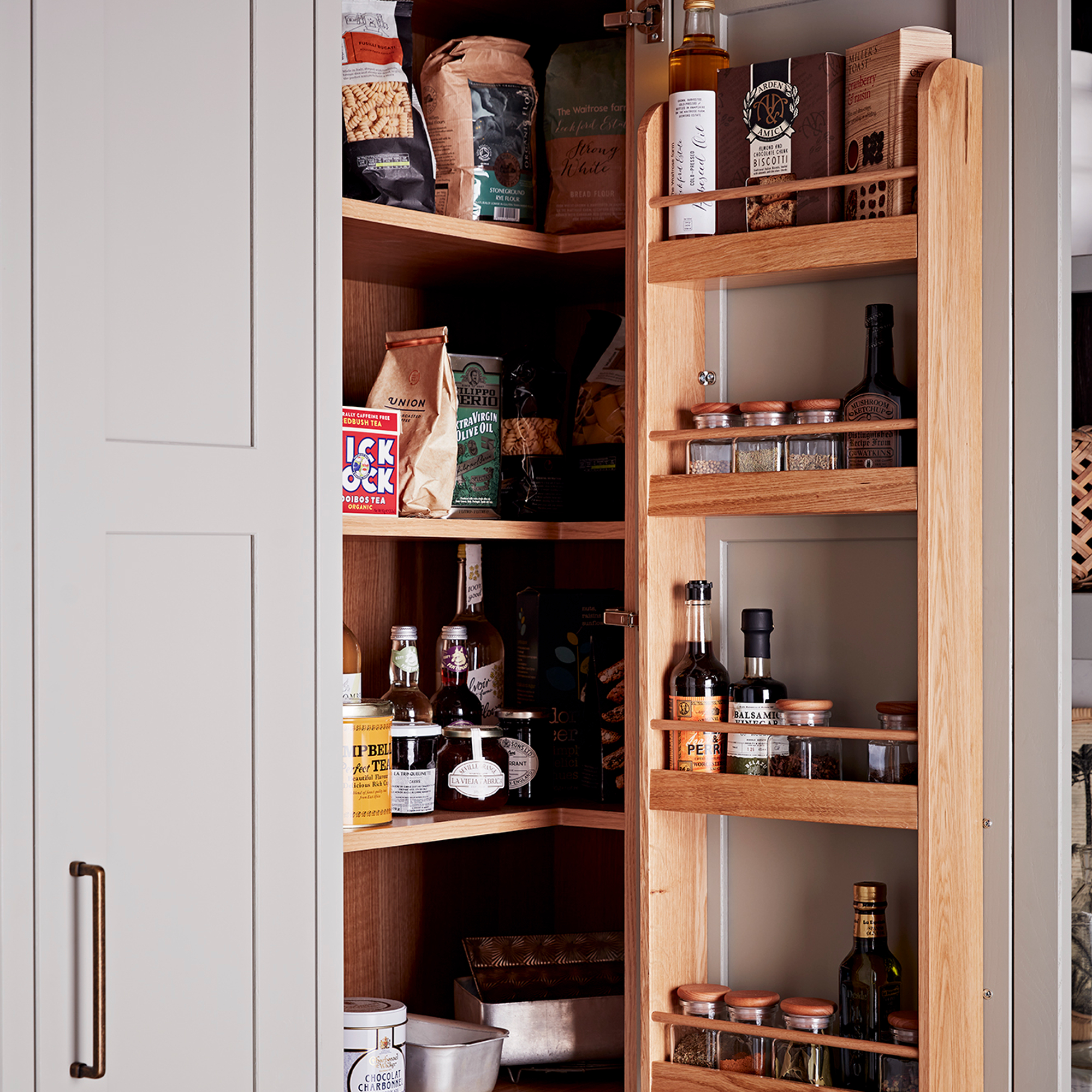
'Savvy storage solutions like door-hanging storage units can make a huge difference to your kitchen cabinets, and there are so many affordable options available,' say the decluttering experts at Vintage Cash Cow.
Knowing how to organise kitchen cupboards involves utilising otherwise wasted space, which you can do with clever door-mounted pockets. Strategically positioned so that they don’t bash into shelves, the fabric pockets are perfectly sized for small items or loose odds and ends that often get lost at the back of cupboards.
13. Organise pantry storage for easy access

Store fruit and veg in easy-access baskets such as the Observator basket, £3, IKEA, so you can dip in and grab what you need without having to take everything out. This under-shelf basket slots in place and is a great way of utilising wasted space above short jars and tins.
Opt for mesh, wire or woven baskets when storing fruit and veg so that air can circulate and supplies won’t perish.
14. Elevate small jars and tins
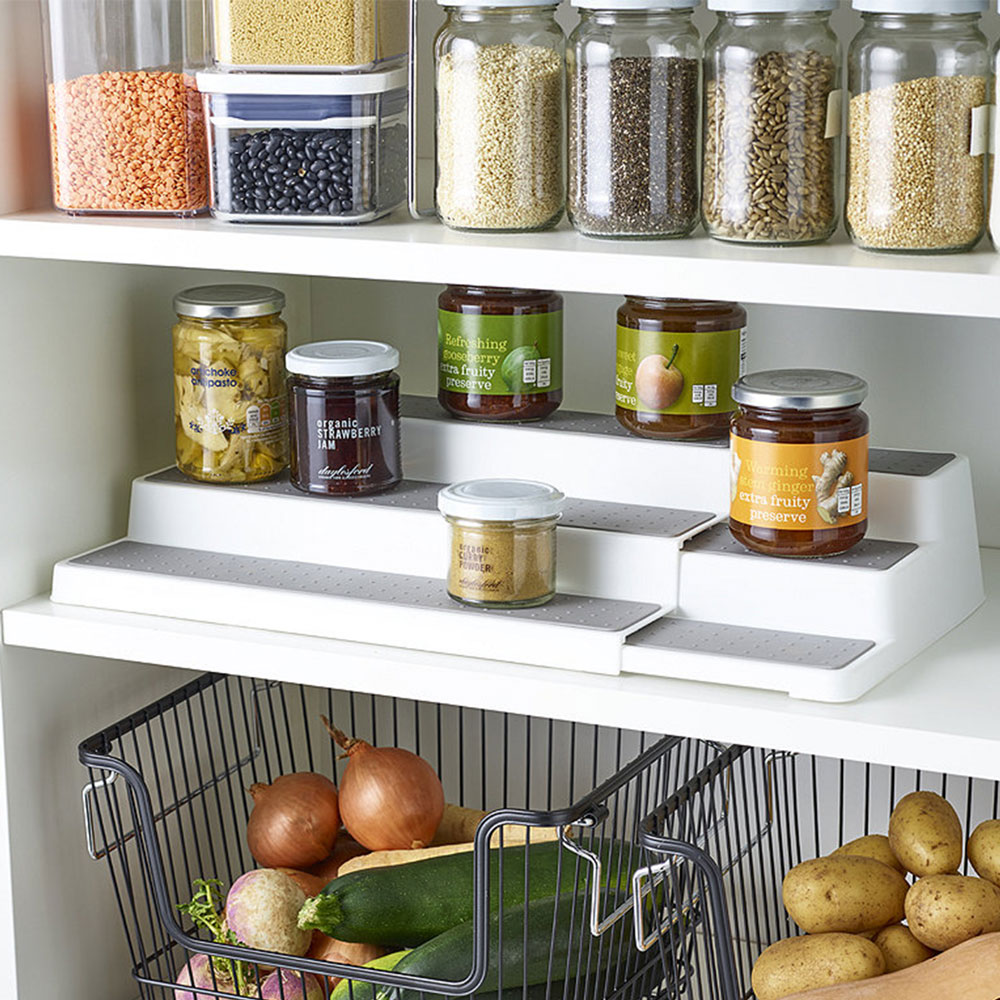
Tall kitchen cabinets and deep shelves mean that smaller items often get left unseen at the back. A shelf stepper like this expandable shelf organiser, £19.99, Lakeland, lets you see what’s inside cupboards more easily, with smaller items at the back elevated, so they don’t get lost.
This one expands to fill shelf space and has a non-slip surface to stop jars from rolling around.
15. Use drawers to keep crockery safer
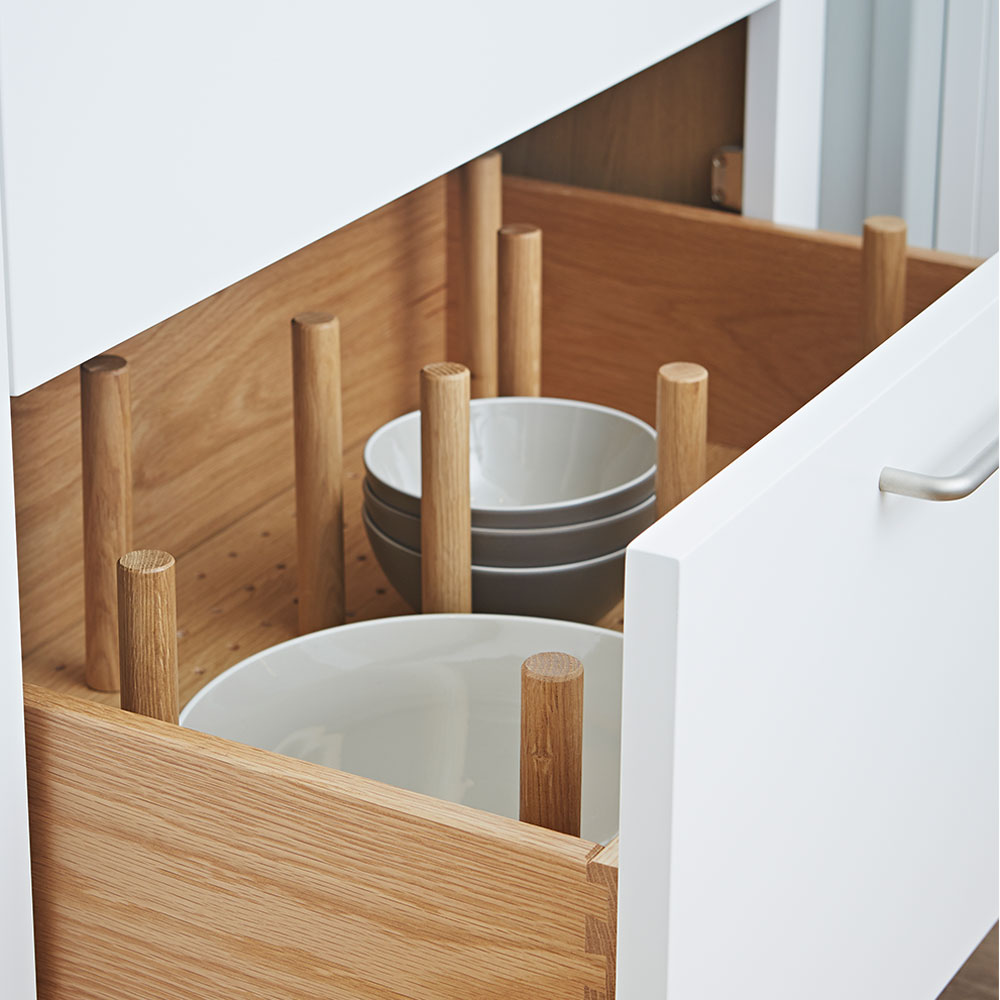
Learning how to organise kitchen cupboards can often mean utilising drawer space too. Tall stacks of crockery can be tricky to grab if they’re stored in high-up kitchen cabinets, so why not use space lower down by storing bowls and dishes in deep storage drawers. Wooden peg dividers keep stacks separated, with buffers at the edges to keep dishes from sliding and chipping when drawers are opened and closed.
16. Get drawers better-organised
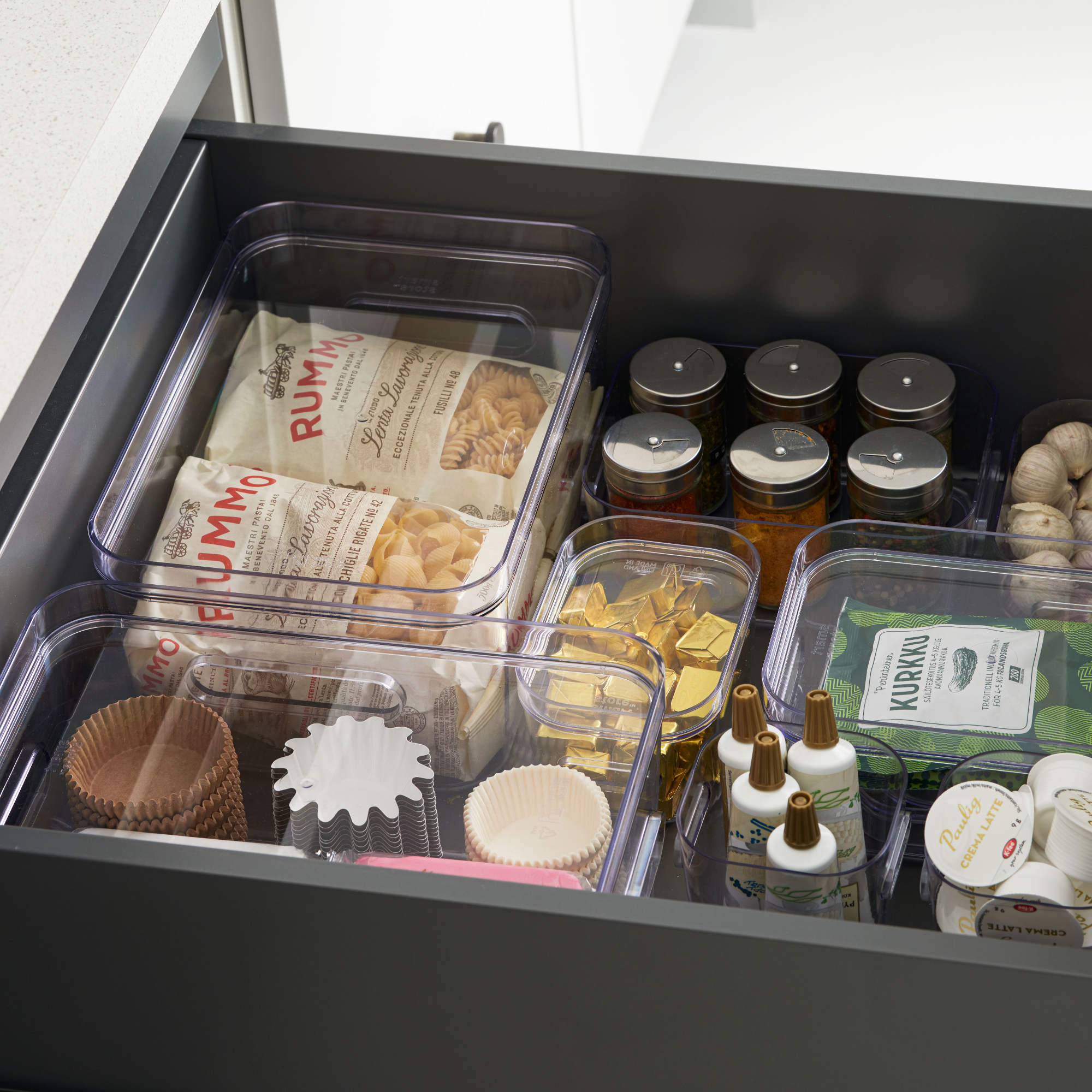
Table linens, cloths and oven gloves often end up in an untidy heap or get shoved to the back of a cupboard. Storing textiles in a drawer will keep them flat and make them easier to find. Organise drawers with adjustable wooden dividers that simply slide apart to section-off the contents and can be used on any size drawer. The Set of two expandable wooden drawer dividers, £20, A Place for Everything is a good option.
'Compartmentalised, wide pull-out drawers are great for maximising kitchen storage because they allow for the whole drawer space to be used,' says Richard Turner, National Sales Manager for UK & Ireland, Pronorm. 'All items are visible and accessible and organised exactly how the user wants them.'
17. Store pan lids on the backs of doors
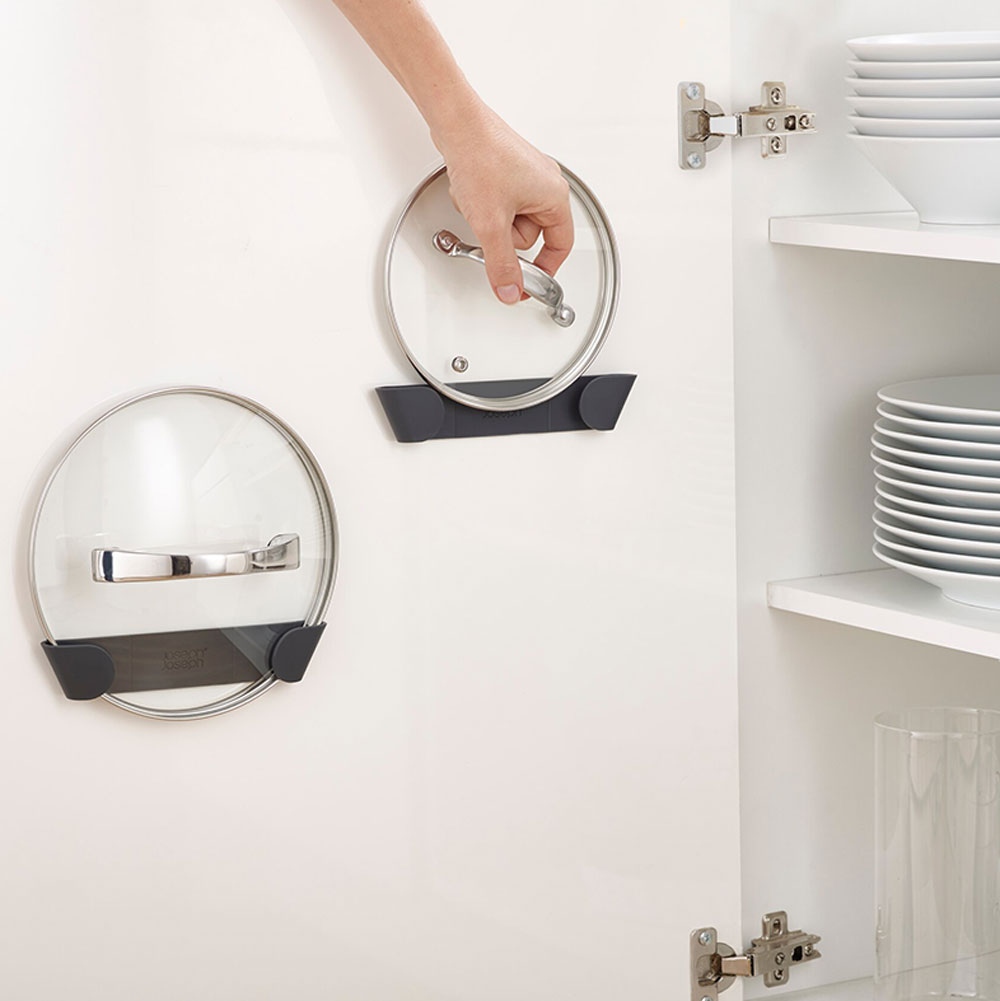
Lids can easily get separated from pans and end up rattling around at the back of a drawer or cupboard. These JosephJoseph CupboardStore pan lid holder, £9.50 for four from John Lewis & Partners will solve that problem and utilise otherwise wasted space on the backs of cupboard doors. The lids will slot easily into them and you'll never have to rummage around for one while you're cooking.
18. Keep essentials close to hand
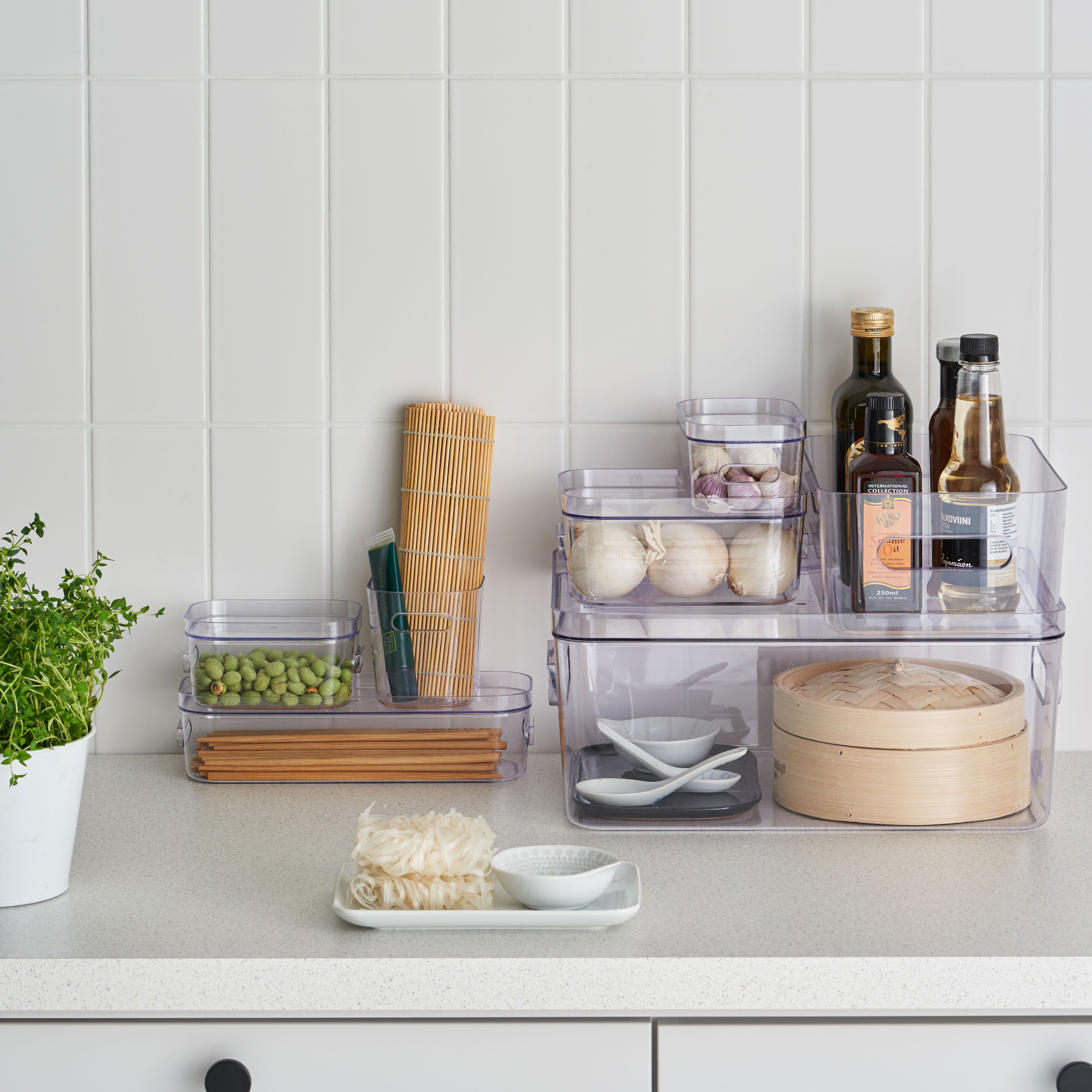
'It makes sense to store any cereals, breads and spreads near the toaster and microwave and we like to keep condiments, herbs, spices and sauces near the oven', the Style Sisters say.
Knowing how to organise kitchen worktops doesn't mean you have to keep them completely clear of the things you use on a regular basis. These 4 Pack Clear Storage Organisers, £22.99 at Amazon, are ideal for housing spice jars, condiments and oils in an orderly fashion, so that you can still access them easily enough while you're cooking dinner. And if you prefer to keep breakfast food out on the kitchen worktops as well, transfer what you can into clear storage jars, which look a lot neater than branded food packets.
19. Make use of end space

Learning how to organise kitchen cabinets should involve every inch of your storage space. Squeeze in a shelf or two at the end of a run of units or on the reverse of your kitchen island ideas. Small shelves are perfect for cookery books or for showing off decorative kitchenware, while a row of baskets makes handy extra storage for loose fruit and vegetables.
20. Slot trays and boards in-between cupboards
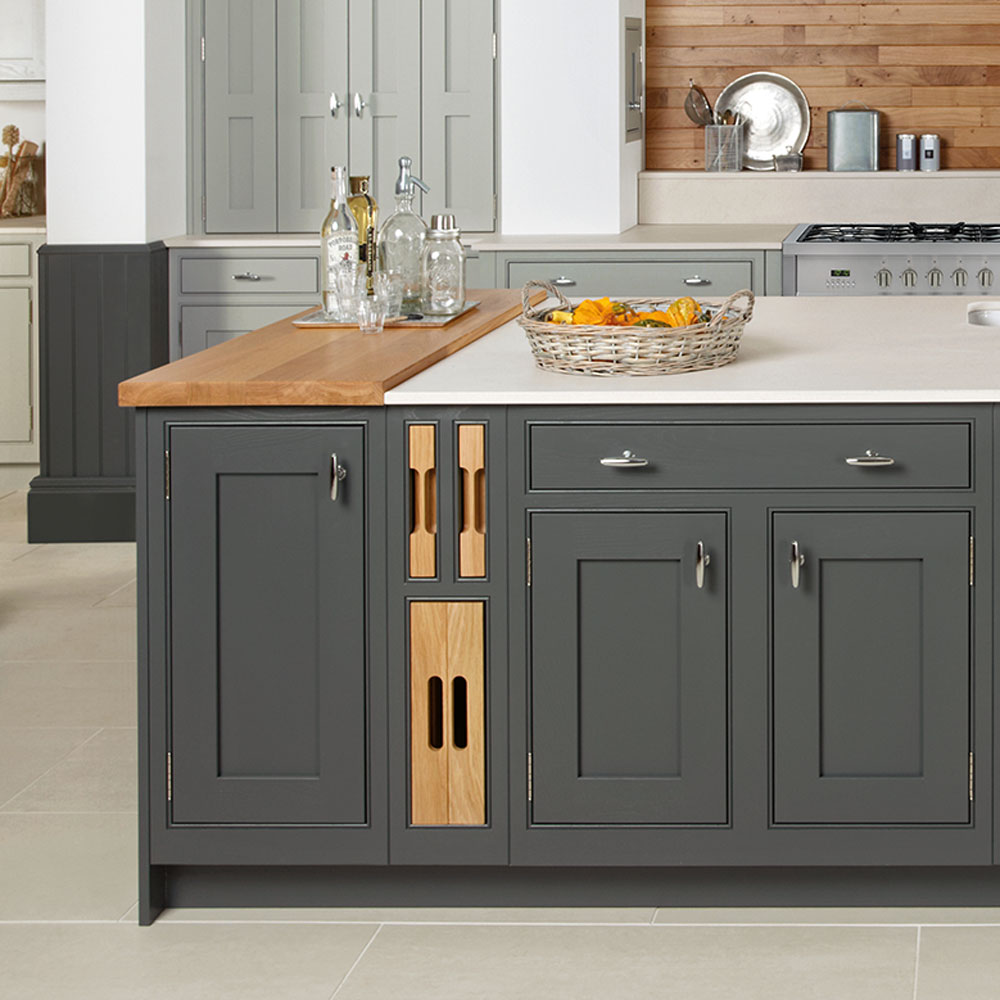
Learning how to organise kitchen cabinets is often just a case of utilising every inch of space available to you, so that you can maximise storage potential. Find use for wasted inches between kitchen base units by adding a slot-in holder for wooden chopping boards and kitchen trays. Or add a pull-out rail and use the space to hang tea towels and oven mitts.
21. Add a set of slimline drawers
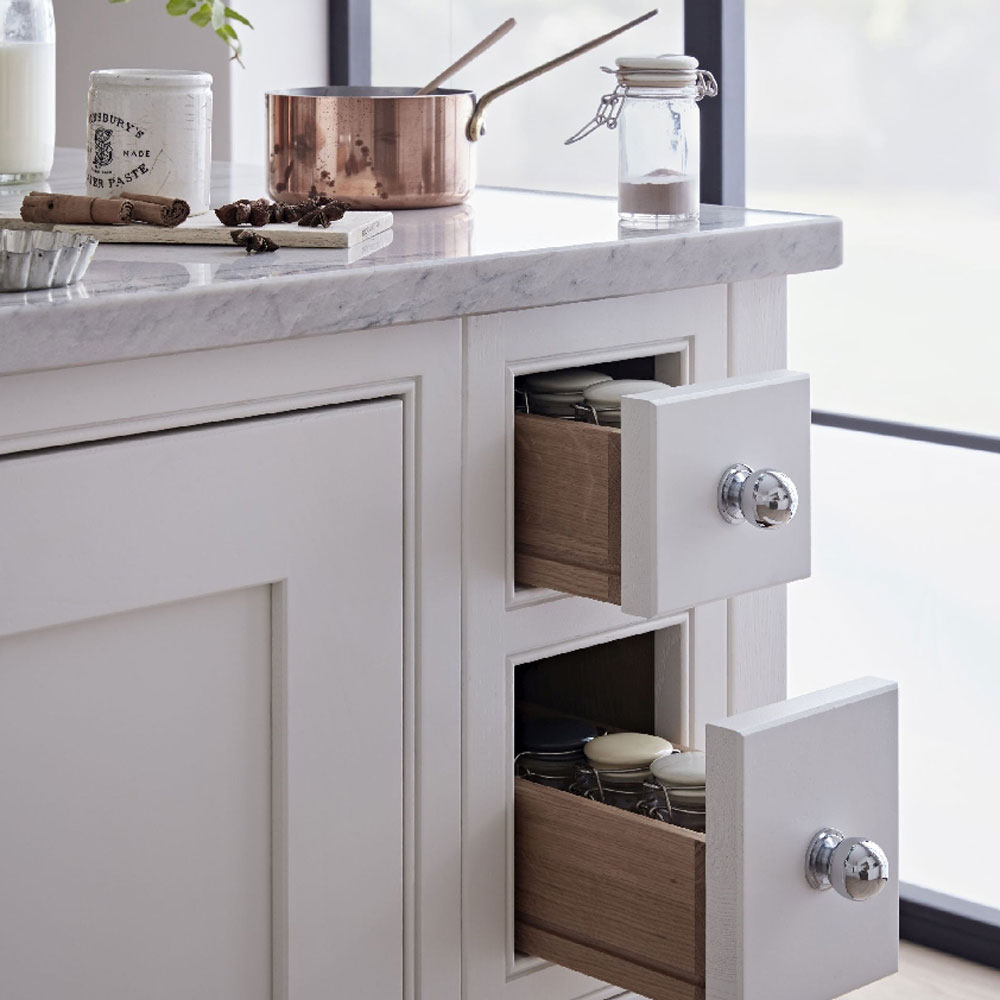
Utilise wasted space at the end of a run of kitchen units by slotting in an extra-narrow set of drawers. Positioned close to the hob, they make the perfect space to slot in spice jars, oils and condiments so that everything’s to hand when cooking.
‘Strategic storage will make your kitchen stand out and ensure you’ll enjoy using it every day,’ says Ben Burbidge at Kitchen Makers.
22. Try stacking to save inside space
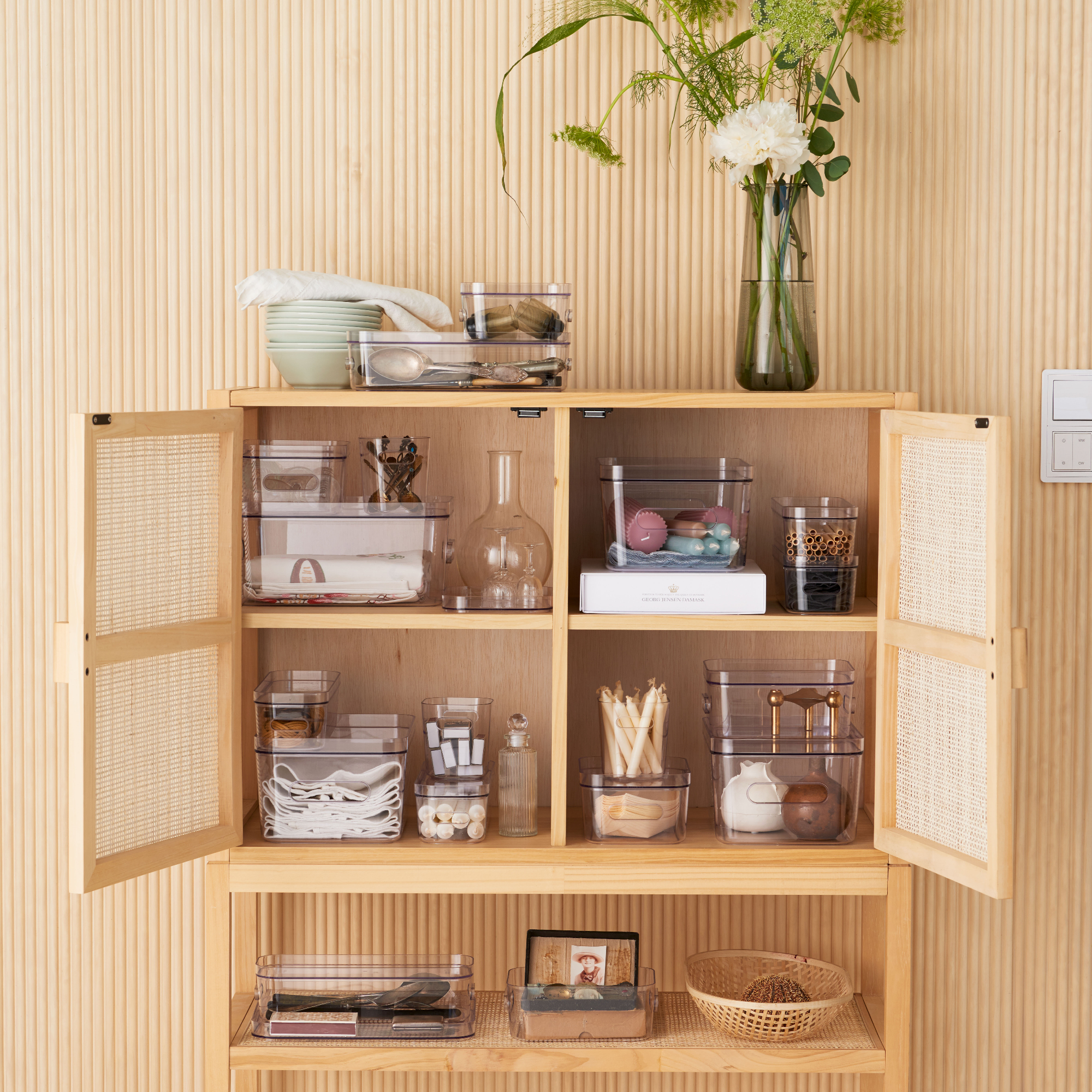
‘Stackable baskets are a great solution for any type of kitchen,’ says Simon Glanville at A Place for Everything. ‘They’re lightweight space savers that create another level within the cupboard without having to pay for costly kitchen improvements. Adding these to the kitchen gives extra storage, without taking up precious counter space and means that all your tins and dry good are easily accessible.’
23. Label your containers
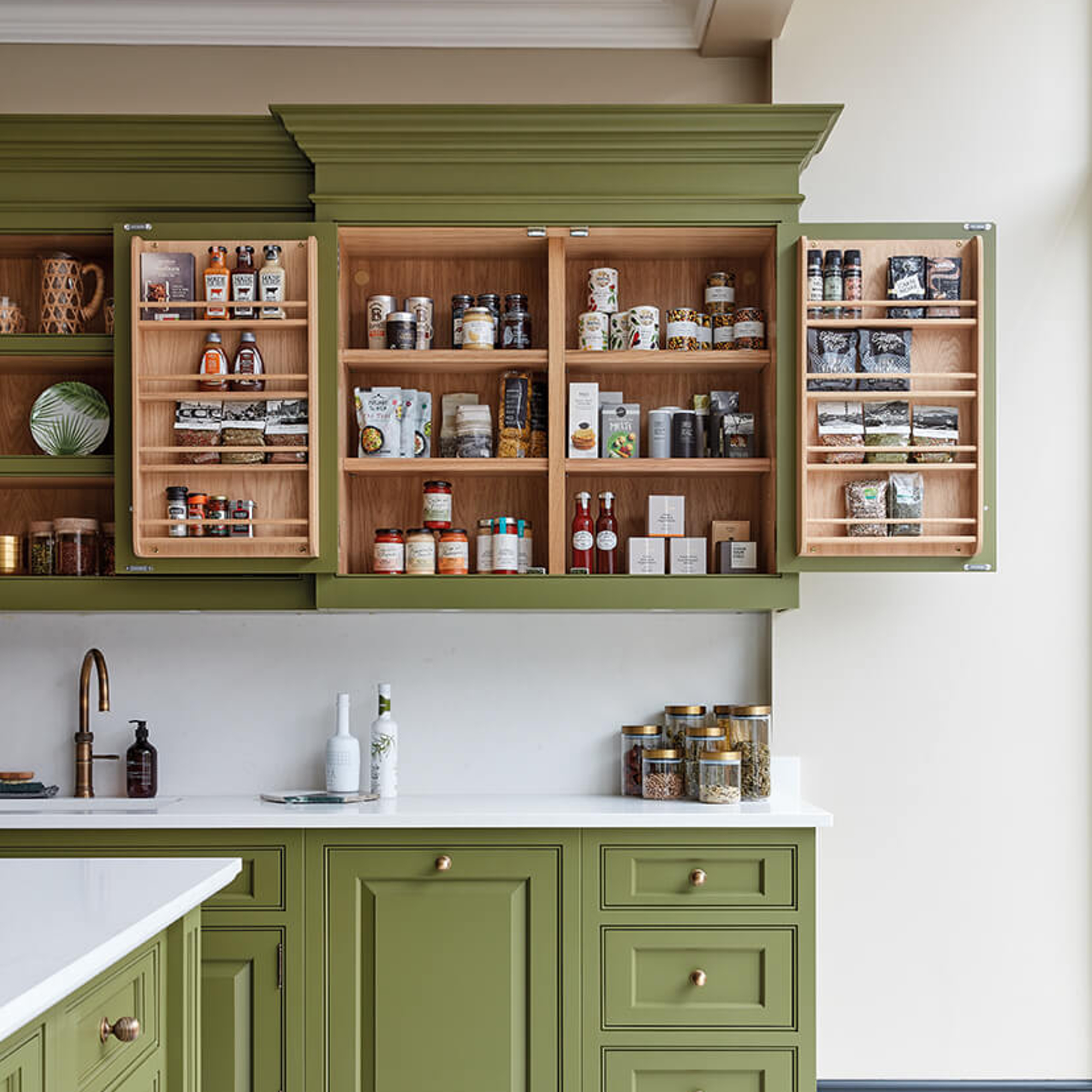
'It’s important to think about how you can best store your items in a practical, accessible and aesthetically pleasing fashion, while also taking into consideration the food items shelf life and frequency of use e.g spices, wholegrains, sauces,' says Jane Thyeson, Design Lead, Smile Kitchens. 'To add a rustic charm to your pantry, consider labelled glass mason jars or containers specifically designed for each food type.'
Labelling food storage containers will further organise them so you know where to keep what. You'll be more likely to stick to the system when unpacking the groceries every week, maintaining your cabinet organisation consistently. Opt for pre-labelled containers, or use a handy label maker to create your own, like the Brother Craft Label and Ribbon Printer H200, £39.99 at Ryman. Labels are especially helpful if your containers aren't see-through.
FAQs
What is the best way to organise kitchen cabinets?
'When planning where to store items in your kitchen, first think about how YOU use them,' says Amanda from Professionally Organised. 'It makes no sense to keep your kettle, cups and teabags in 3 different places that aren't close by.'
You can apply this principle to all the items stored in your kitchen cabinets; store all your crockery together, pots and pans, and keep cooking oils and spices near the hob. 'Storing like with like will mean that you can always find what you are looking for and it makes it easier for everyone else in the family to put things away too,' Amanda says.
'When packing items away after use, remember to place everything back in order of need, with the most frequently used at the front – you’ll be thanking yourself later,' says Joe from ProCook. 'Another smart thing you can do is opt for storage containers which are tall and narrow, taking up less shelf space in your cupboards.'
Knowing how to organise kitchen cupboards will be a lot easier if you frequently declutter your cabinet's contents. Creating a good system of organisation is a lot harder when you're trying to make space for expired food packets and unusable electrical appliances.
How do you decide where to put things in kitchen cabinets?
You want to place items so that they are in as convenient a place as possible. 'For ease and time saving, place things you need close to where you need them,' suggests Kathryn Lord, Professional Organiser, More to Organising. 'So have your herbs and spices near the hob and have your crockery near the dishwasher.'
'Remember to consider the preparation space around the cooker and sink area, you’ll need plenty of room either side of these stations,' says Al Bruce, Founder, Olive & Barr. 'For the cooker area, you’ll need space for baking trays that come straight out of the oven, while the sink area needs plenty of room for stackable pots and dishes ready to be washed.'
Because you're leaving space in these areas, you'll want to maximise space in surrounding cabinets. A good rule of thumb is to keep most reached-for items towards the front, and the less reached-for at the back.
‘Group kitchen kit and supplies together in a place that makes sense, so that your kitchen flows better,' says Vicky Silverthorn. ‘Tea and coffee should live next to mugs, cups and kettle.'
How are kitchen cabinets supposed to be organised?
Knowing how to organise kitchen cabinets involves thinking practically. Envision the daily activities that unfold in the kitchen and store your items in a way that will make these activities run as smoothly as possible.
Start with a good declutter, getting rid of anything you don't need. 'Clear out those extra baking dishes that are never used and collecting dust, not to mention the dry food that has been lost to the back of the cupboard,' says Al Bruce. 'Whether you have a large space or a smaller kitchen, getting creative with your storage solutions will make sure your kitchen always feels clutter-free.'
Once you've streamlined the contents of your cabinets, organise what's left into categories, such as tableware and glasses, serving dishes and platters, cookware, small appliances, etc. Then think about where everything belongs before putting away.
'A good tip is to try grouping items together such as all your baking products including different types of sugar and flour, as well as dried foods like chickpeas, lentils, rice and pasta,' says Sarah Savery-Smith, Brand Director, ProCook. 'This will make items much easier to find whilst cooking, along with helping to keep your pantry neat and tidy.'
Transferring food into clear, stackable containers is a great way to organise your kitchen cabinets. Not only will your cupboards appear visually neat, you'll know where everything is at a glance.

Lisa is a freelance journalist who has written about interiors for more than 25 years. Previously editor of Style at Home magazine, she has worked on all the major homes titles, including Ideal Home, Country Homes & Interiors, 25 Beautiful Homes and Homes & Gardens. She has covered pretty much every area of the home, from shopping and decorating, crafts and DIY to real homes and makeovers and now regularly writes gardening stories for Ideal Home.
- Holly CockburnContent Editor
- Katie SimsContributor

